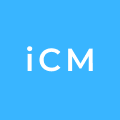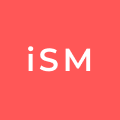At a Glance
Costing methods for pharmaceutical manufacturing, especially standard costing, are proving essential for reducing hidden costs and improving long-term financial performance.
Recent studies suggest that up to 30% of operational costs in pharma manufacturing can go undetected due to poor data discipline, manual overrides, or disconnected systems. As companies aim to scale, improve profit margins, and remain audit-ready, pharmaceutical manufacturing cost breakdown is no longer optional.
Standard costing provides clarity across the value chain, from planning to batch execution to variance analysis. When integrated into modern ERPs like Microsoft Dynamics 365, it gives leadership full transparency into daily production costs and performance gaps.
Introduction: A Shifting Industry Landscape
The pharmaceutical industry is undergoing accelerated transformation. As of 2024, the global pharma market has crossed $1.7 trillion in value, well ahead of previous projections. This growth is expected to continue at a CAGR between 6.15% and 7.5%, potentially reaching over $3.1 trillion by 2032.
This expansion is driven by increased R&D investment (now nearing $288 billion annually), longer lifespans, chronic illness prevalence, and demand for advanced therapies. For mid-sized manufacturers and CDMOs, modernization is not optional. Tools like standard costing enable companies to operate lean while remaining responsive and compliant.
In this context, understanding the true pharma manufacturing plant cost is essential. From land acquisition to specialized equipment, compliance, and workforce training, the initial investment is significant but necessary for scaling efficiently.
Revisiting the Global Market Opportunity
Market updates from 2024 show significant movement across key regions:
- The U.S. pharmaceutical market is valued at $634.3B, expected to reach $883.9B by 2030 (5.72% CAGR).
- Emerging markets like India, China, and Brazil have hit a combined $1.78 trillion valuation, with India alone seeing an 11.32% CAGR.
- Europe’s market stands at $488B and is expected to grow steadily to $688B by 2030.
With global expansion comes pricing pressures, regulatory variance, and supply chain complexity, making precise pharmaceutical manufacturing cost breakdown vital.
Why is Standard Costing Critical in Pharmaceutical Manufacturing?
Standard costing allows pharmaceutical companies to estimate cost and margin at the planning stage, then track deviations in real time. When fully integrated into ERP systems, it aligns financial strategy with production operations.
Beyond planning, standard costing empowers finance leaders with accurate variance analysis, enabling better reporting, audit preparedness, and cost forecasting. Systems like Dynamics 365 offer tools to set standard cost per BOM or formula and trace these across intermediates and finished goods.
Additionally, regulators such as the Competition and Consumer Protection Commission (CCPC) play a role in monitoring fair pricing. Understanding CCPC charges in pharma ensures compliance with competition laws and prevents cost inflation across the supply chain.
Biggest Challenges in Pharmaceutical Manufacturing Cost Breakdown
Several factors can introduce cost distortion and complexity:
- Hidden Costs: Fast-moving materials, undocumented substitutions, and unrecorded labor hours are major contributors to cost overruns.
- Delayed Data Capture: Relying on manual entry post-production leads to inaccuracies. IoT devices and barcode automation improve this by capturing data in real time.
- Rework and Waste: Plants with tight data controls show lower rework rates (~3%) compared to others (~8%). Tracking batch-level performance is key.
- Multi-Tier Batches: Complex formulations require visibility across intermediates. Standard costing ensures cost transparency at each transformation stage.
Inaccuracies in pharmaceutical manufacturing cost breakdown often come from these hidden inefficiencies, highlighting the need for ERP-driven visibility.
How Does ERP Enable Standard Costing in Pharmaceutical Manufacturing?
Modern ERP platforms like Microsoft Dynamics 365 have transformed how standard costing is implemented and utilized, further highlighting ERP’s impact on pharmaceutical manufacturing.
Key Features Include:
- Standard cost rollups across materials, labor, and overhead
- Batch-wise variance analysis for yield and consumption differences
- Multi-tier cost tracking from intermediates to final product
- Real-time data via IoT, MES integration, and barcode scanning
This level of integration allows manufacturing, QA, and finance teams to operate with a shared, real-time view of cost performance. Whether evaluating new investments or calculating pharma manufacturing plant cost, ERP-driven insights ensure leadership makes informed decisions.
The Strategic Case for Accurate Costing
Accurate costing supports more than finance; it underpins growth strategy. From product mix decisions to M&A valuation and compliance with legislation like the U.S. Inflation Reduction Act, cost transparency drives informed action.
By incorporating compliance considerations such as CCPC charges in pharma, businesses can better align financial practices with regulatory requirements while safeguarding long-term profitability.
Companies that modernize their costing are better positioned to identify their most profitable formulations, justify CapEx, and adjust pricing models proactively.
Conclusion
Pharmaceutical companies operate in a high-stakes environment. As the market expands and regulations tighten, having a clear pharmaceutical manufacturing cost breakdown is now a competitive advantage.
Standard costing, when paired with a robust ERP like Dynamics 365, helps manufacturers control costs, optimize portfolios, and scale sustainably. It’s more than a finance tool—it’s a modernization lever.
Want to see what it looks like in action?
Book a consultation with Xcelpros and explore how we enable strategic costing with Microsoft Dynamics 365.



